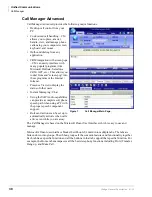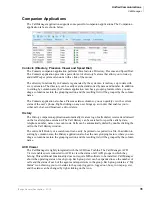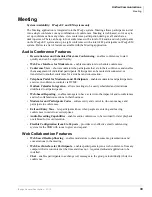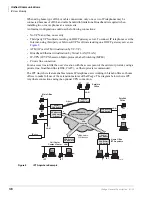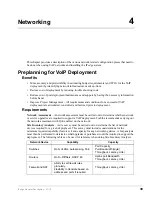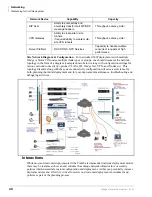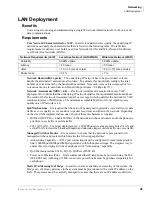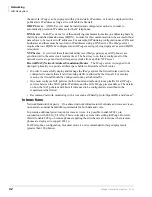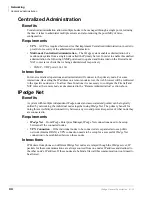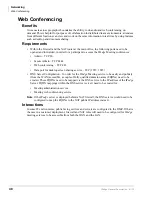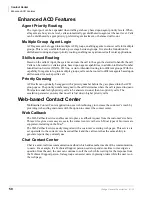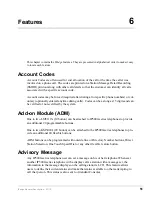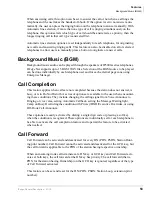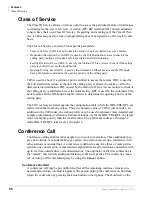
Networking
Remote Administration
IPedge General Description 01/12
43
Remote Administration
Benefits
Gives an administrator the ability to manage the system from a remote location, thereby saving
time and money.
Requirements
In order to manage an IP
edge
system from a remote location, any of the following mechanisms can
be used.
HTTPS
– This is a standard web based method to securely access and administer the IP
edge
system from a remote location. In order to use this mechanism:
•
Configure the Firewall to allow bi-directional HTTPS traffic.
•
Configure NAT router to forward HTTPS traffic on a given port to the IP
edge
HTTPS service
(TCP port 9443)
•
Configure the Firewall to allow and NAT to forward TCP ports (10000, 9101-9103)
•
Configure certificate on the IP
edge
system for HTTPS authentication
•
Setup a FQDN for the IP
edge
server in the DNS server.
IPSec VPN
– An IPSec VPN session is setup so an administrator can log on to the network and
administer the system directly. The VPN session must be configured with sufficient privileges to
enable access to the IP
edge
system.
Firewall and NAT Configuration
– This method relies on manual configuration of the Firewall
(allow inbound management traffic) and the NAT router (forward inbound management traffic to
IP
edge
) to allow remote access to the IP
edge
system from a specific IP address or group of IP
addresses. The following ports need to be opened and forwarded for remote administration
purposes, from specified IP addresses:
•
HTTP – TCP port 8080
•
Webmin – TCP port 10000
•
BACULA – TCP ports (9101 - 9103)
Interactions
Port Forwarding – In some instances and deployments the standard ports used by IP
edge
may also
be used by other systems and/or services within a deployment. One can also encounter this
situation if there are multiple IP
edge
nodes within a single LAN. When one encounters such
situations it would be necessary to use NAPT (Network Address and Port Translation) instead of
standard NAT (Network Address Translation only) translation, to enable remote administration.
Содержание ID EDGE
Страница 1: ...TOSHIBA Telecommunication Systems Division January 2012 General Description Title Page ...
Страница 6: ...This page is intentionally left blank ...
Страница 12: ...This page is intentionally left blank ...
Страница 24: ...This page is intentionally left blank ...
Страница 128: ...This page is intentionally left blank ...
Страница 134: ...This page is intentionally left blank ...
Страница 142: ...This is the last page of the document ...


